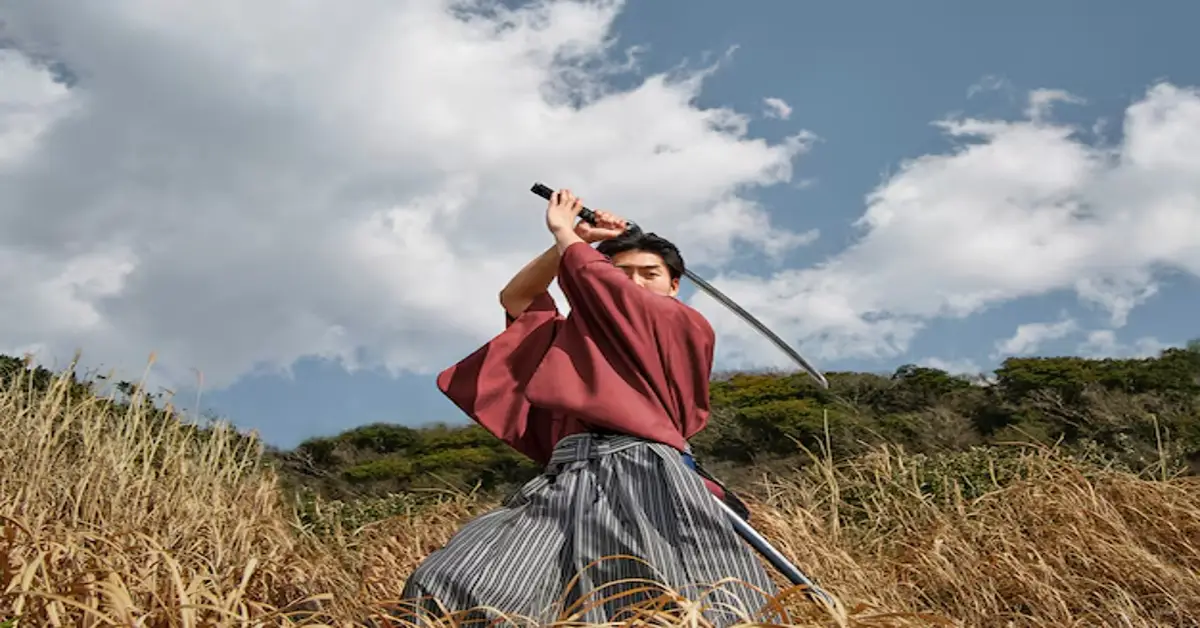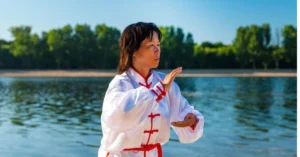Oda Nobunaga is a name that echoes through the corridors of Japanese history. A figure shrouded in both admiration and controversy, he was not just a warlord but a visionary who altered the very fabric of his nation. Rising from humble beginnings, Nobunaga would become one of Japan’s most powerful daimyos during the tumultuous Sengoku period. His strategic acumen and ruthless tactics redefined warfare in Japan, all while laying the groundwork for what would eventually be an era of unification.
But with great ambition came inevitable downfall—Nobunaga’s story is as much about triumph as it is about betrayal and loss. From innovative military strategies to alliances forged and broken, his journey invites us to explore deeper into the motivations that drove him forward. Buckle up as we delve into this captivating saga filled with power struggles, legendary encounters, and an insatiable thirst for control over feudal Japan!
Evolution of Oda Nobunaga
Oda Nobunaga’s journey began in 1534, born as the second son of a minor daimyo. His early years were marked by rebellion against family expectations and a fiery ambition that set him apart from his peers. As he grew, so did his reputation for both intelligence and ruthlessness.
By the age of 20, he took control of his family’s domain in Owari Province through strategic alliances and bold military moves. This marked the beginning of an impressive rise to power.
Nobunaga quickly expanded his territory by defeating rival clans with innovative tactics that shocked opponents across Japan. His unique approach to warfare laid the groundwork for what would become a legendary legacy in Japanese history.
Performance and Impact
Oda Nobunaga’s performance on the battlefield was nothing short of revolutionary. His strategic acumen allowed him to dismantle traditional samurai warfare, leading to swift victories over his enemies. With innovative tactics and a keen understanding of military psychology, he often outmaneuvered larger forces.
Beyond the battlefield, Nobunaga’s impact extended into governance and culture. He centralized power in Japan, laying the groundwork for future unification efforts by other leaders. His patronage of arts and trade fostered an environment where commerce flourished.
The introduction of firearms during his campaigns marked a turning point in Japanese warfare. This not only changed military strategy but also influenced how battles were fought across Asia, leaving an indelible mark on history that resonates even today.
Strategic Usage of Oda Nobunaga
Oda Nobunaga was a master strategist who revolutionized warfare in Japan. He understood the significance of innovation on the battlefield, adopting firearms early on to gain an edge over his opponents. His use of gunpowder weapons changed traditional combat dynamics and reshaped military tactics.
Nobunaga also excelled at psychological warfare. By creating fearsome reputations through bold actions, he demoralized enemies before battles even began. This element of surprise often led to quick victories without extensive bloodshed.
Additionally, Oda emphasized alliances and diplomacy alongside force. He skillfully brought rival clans into his fold by offering incentives and negotiating terms that benefitted both parties. This strategic blend of aggression and collaboration laid the groundwork for unifying Japan under his rule.
Notable Cat Combos
Oda Nobunaga’s strategies were often likened to a game of chess, where every move was calculated and precise. Among his most notable tactics were the “Cat Combos,” a series of maneuvers that showcased his brilliance on the battlefield. These combinations involved swift attacks paired with misdirection, leaving opponents confused and vulnerable.
One famous example occurred during the Battle of Okehazama. Nobunaga’s forces launched a sudden assault on Imagawa Yoshimoto’s troops, catching them off guard. The execution was seamless; it resembled predators pouncing on their prey without warning.
Nobunaga understood timing and positioning like no other. His Cat Combos became legendary in military circles, inspiring future leaders to adopt similar tactics in their quests for power throughout Japan’s tumultuous history.
READ MORE: Bolly4U: Your Ultimate Destination for Bollywood Movies
Oda Nobunaga’s Influence: Pros and Cons
Oda Nobunaga, a pivotal figure in Japanese history, had a profound influence on the nation’s unification. His military strategies and innovative tactics reshaped warfare. He introduced firearms to Japan, altering combat dynamics forever. This advancement gave him an edge over rivals.
However, his aggressive methods drew criticism. Many viewed him as ruthless and tyrannical. The suppression of opposition often led to brutal consequences for those who resisted his rule.
Nobunaga’s legacy is mixed; he was a visionary yet feared leader. While he laid the groundwork for future unification under leaders like Toyotomi Hideyoshi and Tokugawa Ieyasu, the violent means by which he achieved power left scars that resonate in historical narratives today.
The True and Ultra Form of Oda Nobunaga
Oda Nobunaga’s evolution into a formidable leader is often depicted through his strategic brilliance and ruthlessness. His “True Form” embodies the qualities of an innovative military strategist, employing gunpowder and firearms in battles long before others recognized their potential. This approach altered warfare in Japan.
His “Ultra Form,” however, represents a more complex persona—one that blended ambition with visionary leadership. Nobunaga sought to unify Japan under his rule while embracing modern ideas from abroad. He welcomed Western missionaries and technologies, pushing for progress in a time marked by feudal strife.
This duality made him both revered and feared among contemporaries. As he navigated alliances and rivalries, Nobunaga’s legacy became intertwined with notions of power, innovation, and betrayal on the path to unification.
Talents and Development
Oda Nobunaga was not only a formidable warrior but also an astute strategist. His ability to recognize and harness talent in others set him apart from many contemporaries. He surrounded himself with skilled generals, each bringing unique expertise to his campaigns.
Nobunaga’s keen eye for potential led to the rapid development of innovative military strategies. He embraced new technologies, like firearms, which transformed traditional warfare tactics in Japan. This adaptability allowed him to outmaneuver rivals effectively.
Moreover, Nobunaga encouraged merit-based promotion within his ranks. This created loyalty among his samurai and fostered an environment where creativity thrived. His commitment to developing talents contributed significantly to his rise as one of Japan’s most influential figures during the Sengoku period.
The Legacy of Oda Nobunaga
Oda Nobunaga’s legacy is a complex tapestry woven from his military prowess and political strategies. He was a revolutionary leader who sought to unify Japan during the tumultuous Sengoku period. His innovative tactics, such as employing firearms effectively in battle, shifted the landscape of warfare in Japan.
Beyond his battlefield successes, Nobunaga fostered cultural advancements. He supported arts and trade, paving the way for economic growth that would flourish long after his death. The influence he had on Japanese society can still be felt today.
His ruthless ambition sparked both admiration and fear among contemporaries. Whether seen as a hero or tyrant, Oda Nobunaga undeniably reshaped Japan’s future through his relentless pursuit of power and unification.
READ MORE: Watchmen on All Calvin: A New Take on Vigilantism
The Demon King of the Sixth Heaven: Understanding Oda Nobunaga
Oda Nobunaga earned the nickname “The Demon King of the Sixth Heaven,” reflecting his fierce reputation in Japan. This title encapsulates both fear and respect, highlighting his ruthless tactics and unyielding ambition during a time of chaos.
His strategies often involved innovative military techniques that stunned opponents. Nobunaga was not just a warrior; he was a visionary who understood the significance of modern warfare. He embraced gunpowder weapons long before many of his contemporaries, reshaping battles forever.
Beyond battlefield prowess, Nobunaga’s legacy extended to cultural advancements. His patronage helped promote arts and trade, leading to a more unified Japan. Understanding this complex figure requires recognizing both his violent methods and profound impact on Japanese history.
Exploring Daimyo’s Fate and Bushido
The life of a daimyo was intricately tied to the concept of bushido, the way of the warrior. This code emphasized loyalty, honor, and courage—qualities essential for a leader in feudal Japan. For Oda Nobunaga, adherence to bushido shaped his military strategies and personal conduct.
Daimyos like Nobunaga faced constant threats from rivals and internal dissent. Their fate often hinged on their ability to navigate both warfare and politics while upholding their honor. Failure could lead not only to defeat but also disgrace.
Nobunaga’s approach melded traditional bushido with innovative tactics. He pushed boundaries by embracing new technologies in warfare while maintaining the samurai spirit. This unique blend marked a transformation in Japan’s historical narrative.
Connections to Date Masamune and Other Figures
Oda Nobunaga’s connections with other historical figures, particularly Date Masamune, are fascinating. Both were powerful daimyo during Japan’s tumultuous Sengoku period. Their contrasting styles highlight the diverse strategies employed by leaders of that era.
Date Masamune was known for his ambition and fierce independence, much like Nobunaga. While Oda sought to unify Japan through military might and innovative tactics, Masamune carved out his own path in the north. Their rivalry underscored the complex alliances and enmities that defined this time.
Additionally, Nobunaga interacted with various notable figures such as Toyotomi Hideyoshi and Tokugawa Ieyasu. These relationships shaped their fates and ultimately influenced the political landscape of feudal Japan significantly. Each connection added layers to their legacies.
READ MORE: Arnold Vosloo: A Legendary Career in Film and TV
Unveiling the Ambitions of Oda Nobunaga in History
Oda Nobunaga’s ambitions were vast and deeply intertwined with the fabric of Japanese history. He aimed to unify a fractured nation plagued by constant warfare and regional conflicts. His vision extended beyond mere conquest; it included modernization, introducing innovative military tactics, and leveraging European firearms to reshape battle strategies.
Nobunaga sought to diminish the power of traditional institutions that hindered progress, such as Buddhist sects and rival clans. This audacious approach earned him both admiration and animosity from contemporaries. His legacy is one of transformation—one that laid down the foundational stones for subsequent leaders like Toyotomi Hideyoshi and Tokugawa Ieyasu.
Through his relentless pursuit of power, Oda Nobunaga not only altered Japan’s political landscape but also redefined its cultural essence. The echoes of his ambition continue to resonate in modern Japan, reminding us that bold aspirations can carve paths through even the most tumultuous histories.









